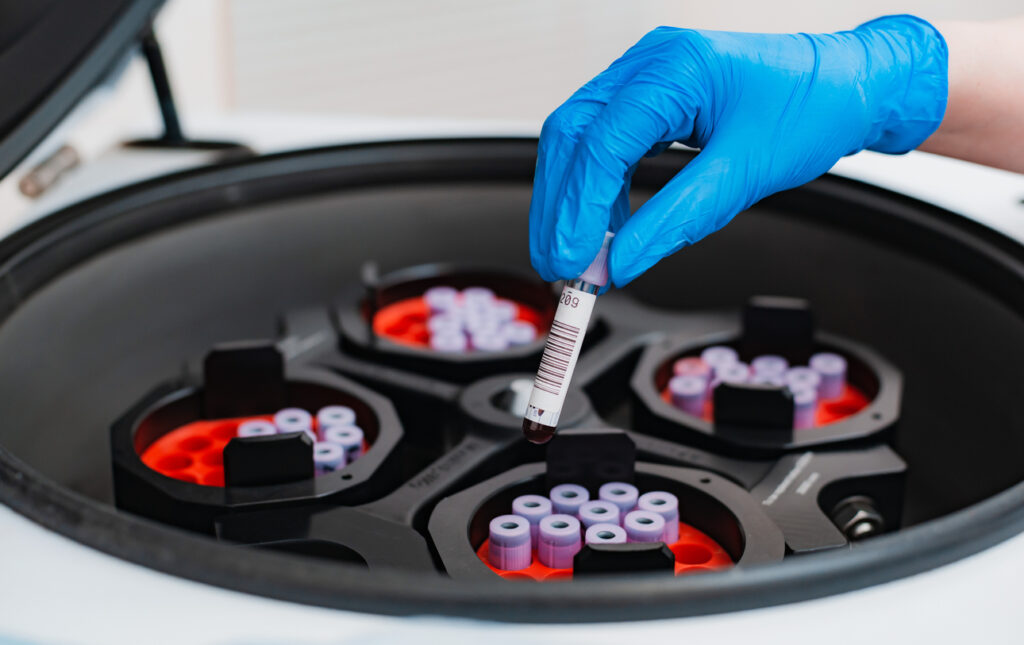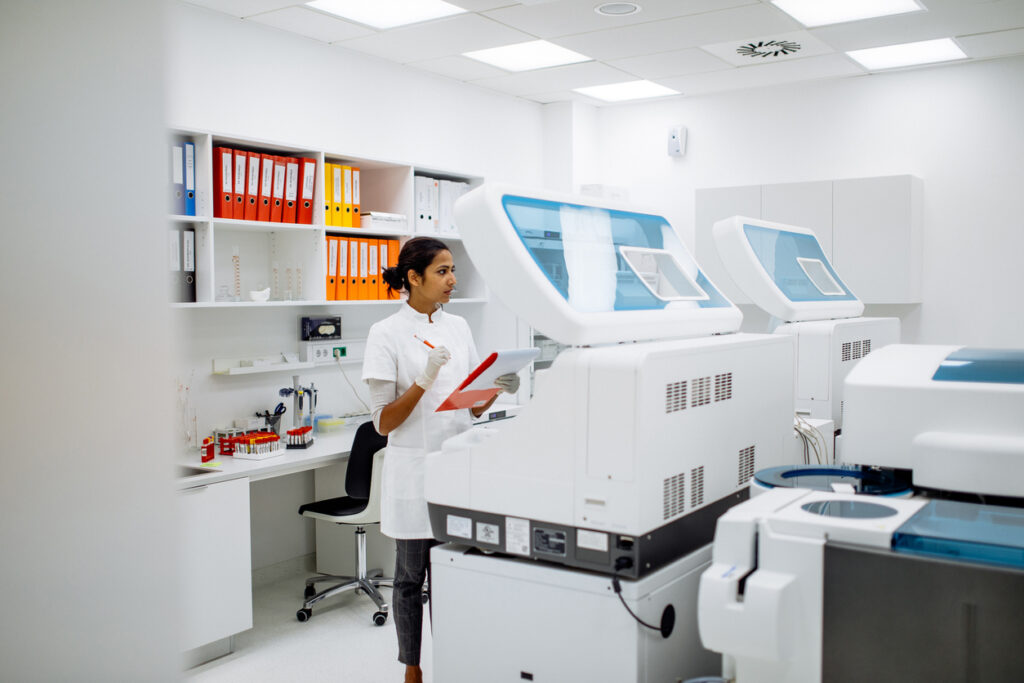Automated Centrifuges and Their Applications
Automated centrifuges share many similarities with their non-automatic counterparts, including the basic principles of centrifugation. An automated centrifuge is a laboratory instrument designed to separate a liquid sample’s components based on density or sedimentation rate.
All centrifuges operate by utilizing centrifugal force and rotational energy. Automated centrifuges are most commonly found as instrument components in a fully or partially automated sample processing protocol, with automation including but not limited to the centrifuge spin steps.
Automation is incorporated into centrifuges to streamline the separation process of a solution’s components. With their automatic processing capabilities, automated centrifuges eliminate the need for human intervention, and they reduce human-caused potential for error.

An automated centrifuge’s core houses a powerful motor capable of high-speed spinning, generating centrifugal force that acts on the samples. Automated centrifuges are used across various scientific, medical, and industrial fields, serving as an essential tool for liquid separation, saving time, and enhancing overall productivity.
Medical and research labs commonly house automated centrifuges, which prove particularly valuable for the rapid separation of blood components or the isolation and purification of cellular components too small for standard filtration methods.
Advantages of Using an Automated Centrifuge
Automation has revolutionized laboratory protocols and output volumes, enhancing centrifugation’s capabilities. These groundbreaking instruments save valuable laboratory time while increasing the accuracy and replicability of high-quality centrifugation results.
Automated centrifuges expedite the centrifugation process compared to standard centrifuges. Programmable protocols can be quickly initiated through a digital screen and guided loading, eliminating the need to adjust speed and time controls for each protocol spin step. This programmability ensures faster centrifugation without compromising consistency. Precise and reproducible spins are achieved consistently, which is crucial in clinical applications governed by stringent quality control guidelines.
An automated centrifuge’s user interface is more user-friendly compared to many centrifuge alternatives. Specialized training or in-depth knowledge of centrifugation principles is not required. Automated centrifuges are optimized for a hands-free approach and quick sample loading. They also incorporate safety measures, such as lid locks and imbalance detection, to protect users and reduce the risk of sample contamination occurring during the spinning process.
The programmable nature of automated centrifuges offers remarkable versatility. They can accommodate various rotor types and sizes, making them highly adaptable to different sample containers without requiring excessive handling or adjustments. Many automated centrifuges include storage databases within the software to record and store the run information digitally, ensuring comprehensive quality control and regulatory compliance.

Alternatives to Automated Centrifuges
Although automated centrifuges offer numerous advantages over standard ones, other types of centrifuges are sometimes the preferred choice, depending on the protocol and resources available. Factors such as cost and required capabilities play a role in determining the most suitable centrifuge type. Most standard centrifuges are less expensive compared to automated ones, making them a viable option for small laboratories that do not require the high-volume processing provided by automation while still providing efficient and powerful spin capabilities.
Automated centrifuges are typically larger and more energy-demanding than their standard counterparts, making them ill-suited for field or remote work. In these instances, standard or mini centrifuges equipped for travel with battery power might be the preferred option. Standard centrifuges are also valuable for teaching and training purposes due to their basic functionality and ability to visually demonstrate centrifugation principles.
Automated Centrifuges and Cell Washing
Centrifuges play a crucial role in cell washing and standard isolation procedures. These methods use centrifugal force to pull the cells to the bottom of the vessel allowing for sedimentation and layer formation. Washes are repetitively applied to the cell population and centrifuged to separate the wash buffer and unwanted material from the pellet. The cells of interest sediment at the bottom, while the supernatant, containing unwanted cells or waste, can be easily removed. Buffer is often then added to resuspend the cells in a safe solution for downstream processing.
Automated centrifuges excel in accurately and rapidly performing the necessary washing and elution steps without requiring the transfer of collection tubes. The automated centrifuge is sometimes found within an automation processing unit or liquid handler, allowing for the transfer of samples directly into the centrifuge rotor to complete wash/spin steps without manual intervention. This capability makes these automated centrifuges useful in large-scale cell washing operations where minimal human handling is required.
Automated Centrifuges and Cell Isolation
Some methods of cell isolation rely on centrifugation to separate cell types into distinct layers based on their size and density. Using an automated centrifuge for cell isolation and layer formation enables the rapid removal of unwanted cell types or the harvesting of desired cells. Cell washing steps are commonly performed after cell isolation and can benefit from automated centrifugation.
Continuous/Rotating Centrifuges
One unique and specialized type of automated centrifuge is the continuous centrifuge, designed explicitly for high-concentration separation of biological samples. Its distinctive rotating membrane filtration system effectively separates components based on size and weight. This unique functionality enables precise isolation and concentration of molecules in a gentle and non-destructive manner.
As the name implies, continuous centrifuges can continuously process large volume samples, eliminating the need for batch processing and making them well-suited for high sample volumes or large-scale projects.
Benefits of Using Microbubbles With Automated Centrifuges
Akadeum’s revolutionary cell sorting techniques work with standard and automated centrifuges. Combining automated centrifuges’ high processing capabilities with our buoyant microbubble technology supports automated cell processing integration, ensuring maximum separation and process efficiency. Our buoyancy-activated cell sorting (BACS™) microbubbles separate cell components with centrifugation, gently floating targeted cells to the sample’s surface.
Learn more about Akadeum’s microbubbles and how they work with centrifuge instruments or explore our cell isolation solutions.


